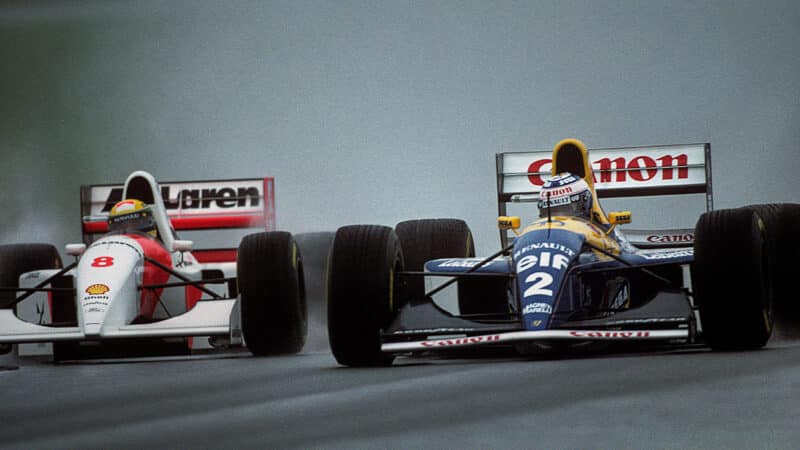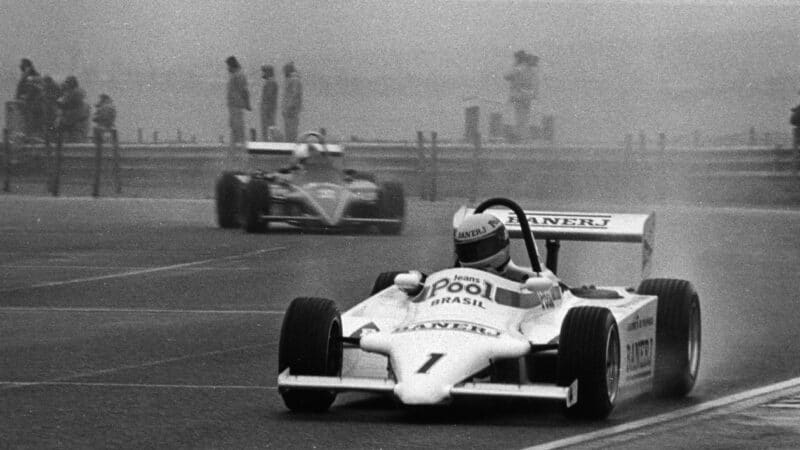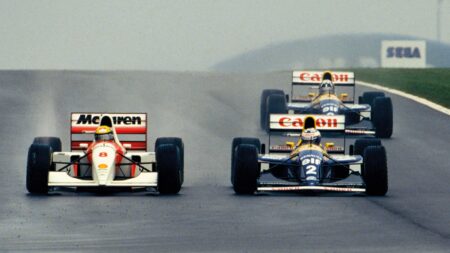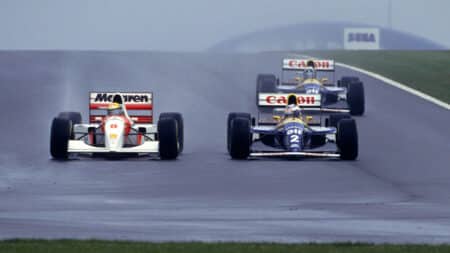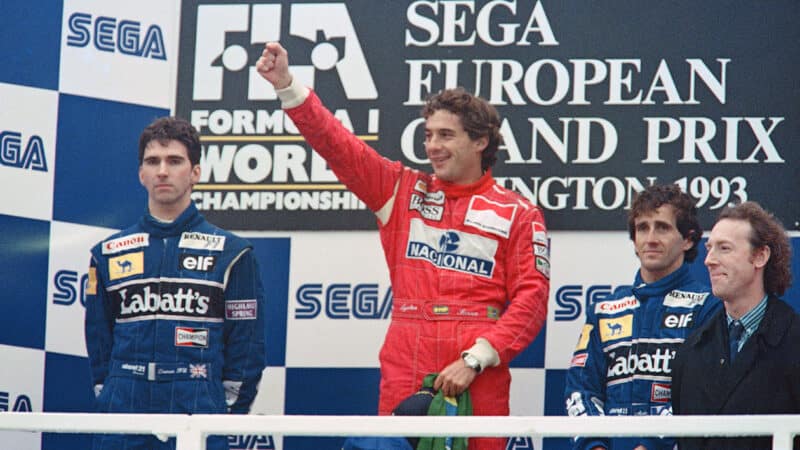At the time Alain Prost was widely regarded as the world’s greatest F1 driver. We knew, most of us, that Senna was ready to go head-to-head with him right now. And we had little doubt that he’d come out on top. To the F1 people of the time it would probably have sounded outrageous. But it wasn’t. It was real. We’d have to wait until 1988 to see that happen – Senna and Prost in the same car – and it ended as we thought it might, with Senna as comfortably faster and world champion. Great though Prost was, this was Senna.
By the time I arrived at a wet Donington that April weekend in ’93, Senna was a triple world champion and had long-since eased Prost out of McLaren. Prost had taken a sabbatical in ’92 after being released by Ferrari amid its poisonous politics – but had spent that time securing himself a drive in F1’s fastest car for ’93, the Williams-Renault. Which infuriated Senna, bringing out his sometimes-entitled attitude. He was a great man and an even greater driver but this side of him was not attractive. He did not have a divine right to be in the best car and his attack on Prost as a ‘coward’ for blocking him being alongside was unbecoming.
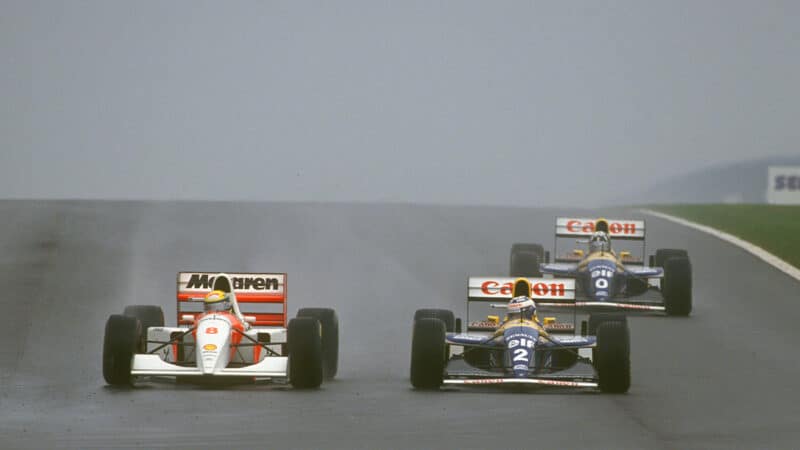
Senna passes Prost for the lead at the start of the race
Grand Prix Photo
But as I worked an F1 paddock for the first time, everyone was helpful. Derek Warwick was especially nice. Back then you could walk into a garage and talk to an engineer or driver, very different to just seven years later. Through the course of the weekend I spoke with every single driver.
Senna had not signed a McLaren contract for ’93, unhappy with the team not having a works engine and it falling behind Williams technologically. Instead, he agreed to a race-by-race deal, at a reported $1 million per race. Donington was round 3 of the championship. Prost had won at a canter in Kyalami but Senna had delivered a victory for his adoring home fans at Interlagos after a rain shower caused Prost to crash out. It was obvious the way the season was going to go, despite Senna’s starring cameos. At Interlagos Senna had qualified almost 2sec slower than Prost.

